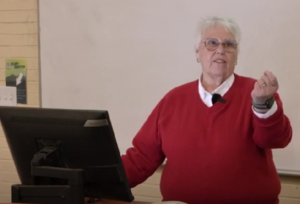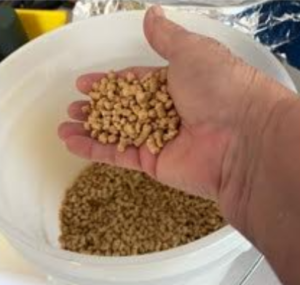Why We Do What We Do
Seminar at NAU
I had the distinct pleasure recently of returning to my alma mater, Northern Arizona University, to host a seminar for the Biological Sciences Department on our recent work in the Galapagos Islands.
It’s always invigorating to discuss emerging technologies and protocols with enthusiastic and inquisitive colleagues and students, and I was very grateful for the opportunity. But that’s only half the story.

The other half is spreading the word to the next generation of scientists about why we do what we do: to answer the dire need for alternatives to poison when addressing the problem of animal overpopulation.
Here’s what the science shows us: in the long term, poisons don’t work and actually can make the problem worse. If you dump warfarin or brodifacoum (two lethal methods of controlling rodent overpopulation) on a cluster of invasive rats or mice, you’re not going to kill all of them. And the ones that survive will pass on their resistance to that poison to future generations.
The Farallon Islands
Meanwhile, the collateral damage can be tremendous. Consider the plan to drop 1.5 metric tons of rodenticide on the ecologically sensitive Farallon Islands off the coast of San Francisco to combat the tens of thousands of invasive house mice eating their way through native insects, seabirds, and plants that are not found anywhere else.
 This plan, which we are actively lobbying against to both the California Coastal Commission and federal officials, trades one problem for many others. The poison to be used, brodifacoum, does not break down in the environment, it accumulates in non-target animals, and its effects persist in the water for about four years.
This plan, which we are actively lobbying against to both the California Coastal Commission and federal officials, trades one problem for many others. The poison to be used, brodifacoum, does not break down in the environment, it accumulates in non-target animals, and its effects persist in the water for about four years.
If there is one thing I’ve learned in my decades of studying rodent reproduction, it is this: their solution to adaptation and survival is to breed their way out. Which is why we need to concentrate our efforts on fertility-control technology.
We turned to island restoration groups and asked them exactly what they needed to make this fertility-control technology work in their environments. They outlined the ideal product and told us it needed to be:
- Safe for human and animal consumption
- Plant-based to avoid additional regulatory costs, which could make the product prohibitively expensive
- A product that worked on both male and female rodents and targeted the reproductive organs directly
- Highly palatable, because the most effective technology in the world is pointless if the rat or mouse won’t eat it.
Our Pellets
Using their insights, we created a pellet that combines items you could find in many kitchen pantries (flour, oats, vegetable fat) with powder from the root of the “Thunder God” vine (Triperygium wilfordii) commonly used to treat conditions like rheumatoid arthritis, but with this important side effect: infertility. And it is perfectly safe for other animals, unless you are allergic to peanuts; peanut butter is the lure we use to make the pellets delicious to rats.
 We know the pellets work. Now, we are continuing to refine and improve our methods of distributing this technology – in locations from urban centers to animal rescue facilities to the Galapagos – so that it can replace lethal methods of controlling animal overpopulation.
We know the pellets work. Now, we are continuing to refine and improve our methods of distributing this technology – in locations from urban centers to animal rescue facilities to the Galapagos – so that it can replace lethal methods of controlling animal overpopulation.
Our wildlife is being tremendously impacted by the current lethal options. Owls, hawks, even wild cats are dying from eating these poisons, which persist in our environment and bio-accumulate in animals – including the ones we are trying to save by reducing the number of rats and mice that threaten them. We know there’s a better way.


